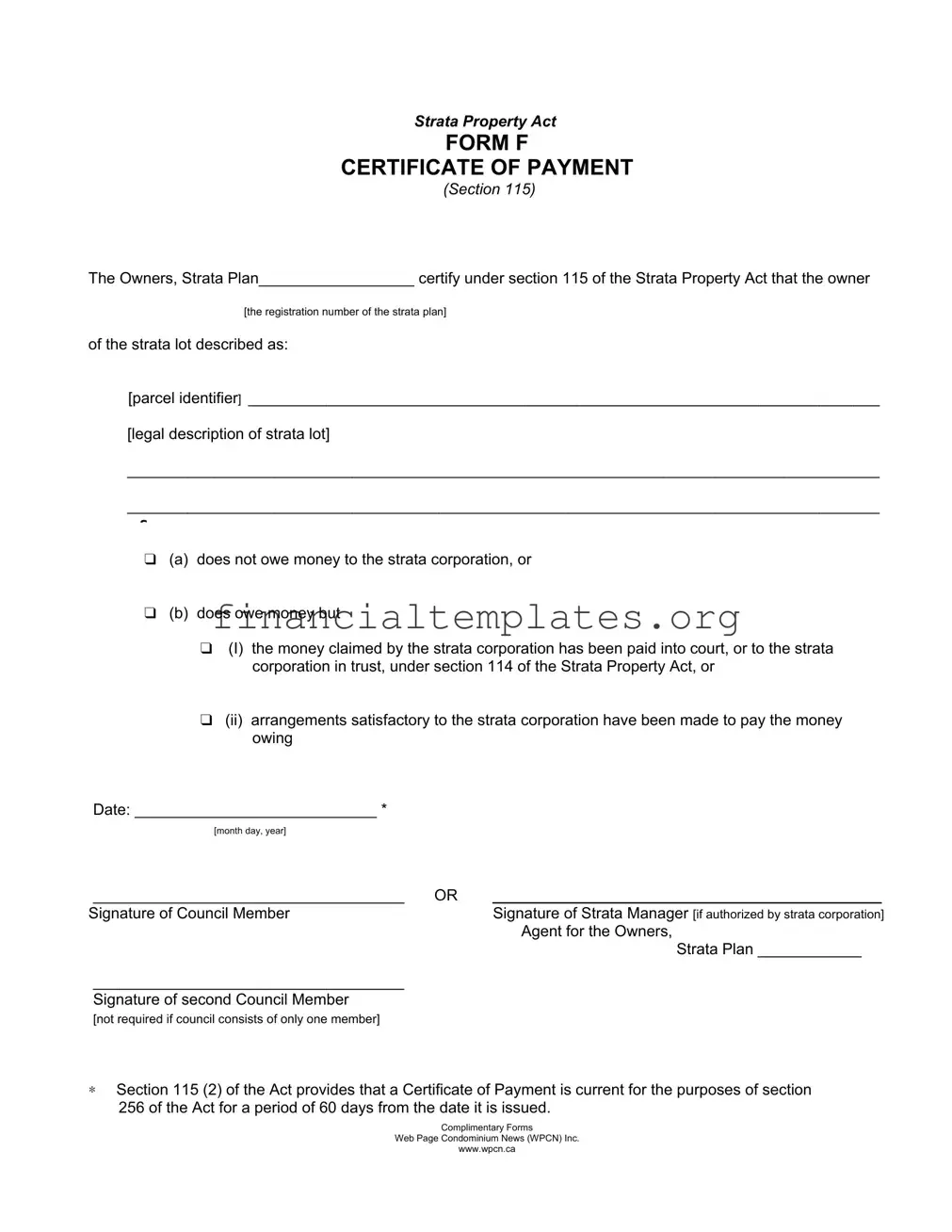Strata Property Act
FORM F
CERTIFICATE OF PAYMENT
(Section 115)
The Owners, Strata Plan__________________ certify under section 115 of the Strata Property Act that the owner
[the registration number of the strata plan]
of the strata lot described as:
[parcel identifier] _________________________________________________________________________
[legal description of strata lot]
_______________________________________________________________________________________
_______________________________________________________________________________________
s
❑(a) does not owe money to the strata corporation, or
❑(b) does owe money but
❑(I) the money claimed by the strata corporation has been paid into court, or to the strata corporation in trust, under section 114 of the Strata Property Act, or
❑(ii) arrangements satisfactory to the strata corporation have been made to pay the money owing
Date: ____________________________ *
[month day, year]
____________________________________ |
OR |
_____________________________________________ |
Signature of Council Member |
|
Signature of Strata Manager [if authorized by strata corporation] |
|
|
Agent for the Owners, |
|
|
Strata Plan ____________ |
____________________________________ |
|
|
Signature of second Council Member |
|
|
[not required if council consists of only one member] |
|
|
∗Section 115 (2) of the Act provides that a Certificate of Payment is current for the purposes of section 256 of the Act for a period of 60 days from the date it is issued.
Complimentary Forms
Web Page Condominium News (WPCN) Inc.
www.wpcn.ca
